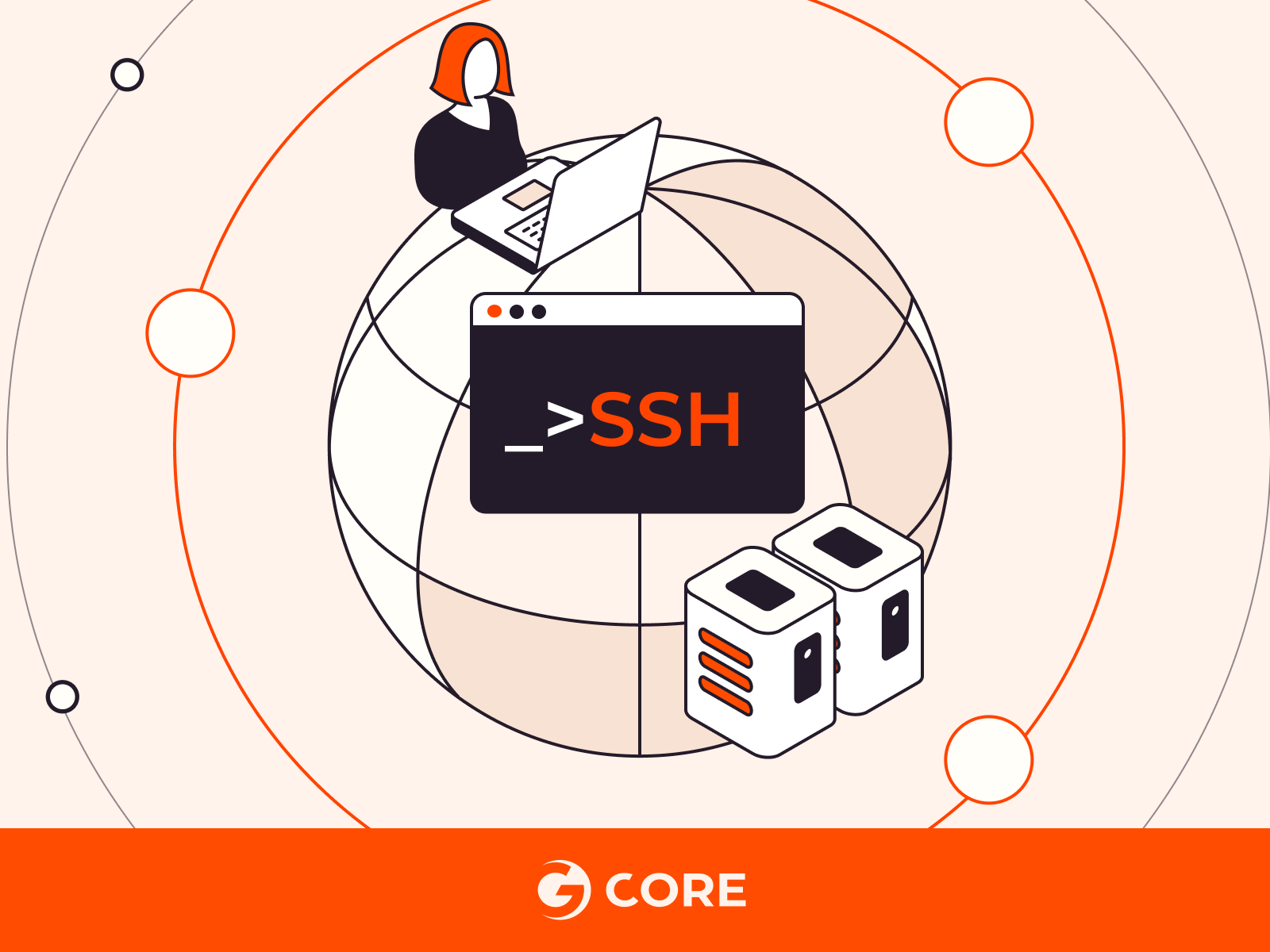In the era of interconnected devices, securely connecting remote IoT devices through SSH on Ubuntu has become crucial for maintaining robust cybersecurity protocols. As more businesses and individuals rely on IoT devices, ensuring secure communication channels is paramount to safeguard sensitive data.
The Internet of Things (IoT) is revolutionizing how we interact with technology, but it also introduces vulnerabilities that must be addressed. Implementing secure communication protocols, such as SSH, is essential to protect data integrity and privacy. This article will guide you through the process of securely connecting remote IoT devices using peer-to-peer (P2P) SSH on Ubuntu, providing step-by-step instructions and expert advice.
Whether you're a system administrator, IT professional, or tech enthusiast, understanding how to configure and secure IoT devices is vital. By following this guide, you'll gain the knowledge and tools necessary to establish a secure connection, ensuring your IoT infrastructure remains protected against potential threats.
- Rhonda Banchero The Remarkable Journey Of A Trailblazing Woman In Tech
- Thriller Movierulz Page 3 Your Ultimate Guide To Exciting Movie Adventures
Understanding IoT and SSH
Before diving into the technical aspects of securely connecting remote IoT devices, it's essential to understand the basics of IoT and SSH. The Internet of Things refers to a network of interconnected devices capable of exchanging data without human intervention. SSH, or Secure Shell, is a cryptographic protocol used to secure network services over an unsecured network.
What is IoT?
IoT encompasses a wide range of devices, from smart home appliances to industrial sensors. These devices communicate with each other and with central systems to perform specific tasks. The integration of IoT in various industries has transformed operations, improving efficiency and automation.
The Role of SSH in IoT Security
SSH plays a critical role in securing IoT communications. By encrypting data transmitted between devices, SSH ensures that sensitive information remains protected from unauthorized access. This protocol is particularly important when connecting remote IoT devices, as it provides a secure channel for data exchange.
- Hsoda 052 Download Your Ultimate Guide To Accessing Exclusive Content
- Bruce Willis The Legacy Lives On Debunking The Myth Of Bruce Willis Died
Setting Up Ubuntu for IoT SSH Connections
Ubuntu is a popular Linux distribution widely used in IoT applications due to its stability and security features. To securely connect remote IoT devices using SSH on Ubuntu, you'll need to configure the operating system properly. Follow these steps to set up your Ubuntu environment:
Installing SSH on Ubuntu
- Open the terminal on your Ubuntu system.
- Run the command
sudo apt updateto update your package list. - Install the OpenSSH server by running
sudo apt install openssh-server. - Verify the installation by checking the SSH service status with
sudo systemctl status ssh.
Configuring SSH for IoT Devices
After installing SSH, you'll need to configure it to suit your IoT requirements. This includes setting up key-based authentication, disabling password-based login, and configuring firewall rules to restrict access.
Securing IoT Devices with SSH
Once your Ubuntu system is set up, it's time to focus on securing your IoT devices. Implementing strong security measures is essential to protect your devices from potential threats. Below are some best practices for securing IoT devices using SSH:
Using Key-Based Authentication
Key-based authentication is a more secure alternative to password-based login. By generating and using SSH keys, you can eliminate the risk of brute-force attacks and unauthorized access.
Disabling Password Authentication
To further enhance security, disable password authentication in your SSH configuration. This can be done by editing the SSH configuration file and setting the PasswordAuthentication parameter to no.
Establishing a P2P SSH Connection
A peer-to-peer (P2P) SSH connection allows IoT devices to communicate directly with each other without relying on a central server. This setup can improve performance and reduce latency, making it ideal for IoT applications. Follow these steps to establish a P2P SSH connection:
Identifying Device IP Addresses
To connect IoT devices using SSH, you'll need to know their IP addresses. Use the ifconfig or ip addr command to identify the IP addresses of your devices.
Configuring SSH for P2P Communication
Once you have the IP addresses, configure SSH on each device to allow connections from other devices. Ensure that the SSH service is running and accessible on all devices involved in the P2P connection.
Best Practices for IoT SSH Security
Implementing best practices for IoT SSH security is crucial to maintaining the integrity of your devices and data. Below are some recommendations to enhance your security posture:
Regularly Updating Software
Keep your Ubuntu system and IoT devices up to date with the latest security patches and updates. Regular updates help protect against vulnerabilities and ensure your devices remain secure.
Monitoring SSH Logs
Monitor SSH logs for any suspicious activity. This can help you identify potential threats and take corrective action before they escalate into serious issues.
Implementing Firewall Rules
Configure firewall rules to restrict access to your IoT devices. Limit SSH access to trusted IP addresses and disable unnecessary services to minimize the attack surface.
Common Challenges in IoT SSH Security
While SSH provides a robust solution for securing IoT communications, there are challenges to consider. Understanding these challenges can help you address potential issues and improve your security strategy.
Managing Multiple Devices
As the number of IoT devices increases, managing SSH configurations for each device can become cumbersome. Consider using automation tools to streamline the process and reduce the risk of errors.
Addressing Network Latency
P2P SSH connections can sometimes experience latency issues, especially when connecting devices across different networks. Optimize your network configuration and use compression techniques to mitigate latency and improve performance.
Data and Statistics
According to a report by Gartner, the number of IoT devices is expected to reach 25 billion by 2030. This exponential growth highlights the importance of securing IoT communications and protecting sensitive data. Additionally, a study by Symantec found that 60% of cyberattacks target small businesses, emphasizing the need for robust security measures.
Expert Tips for Securing IoT Devices
Based on industry expertise and best practices, here are some tips for securing your IoT devices using SSH:
Use Strong Passwords
Even with key-based authentication, using strong passwords is essential. Avoid using default passwords and ensure that all passwords meet complexity requirements.
Limit User Access
Restrict SSH access to authorized users only. Use role-based access control (RBAC) to define permissions and ensure that users have the appropriate level of access.
Regularly Audit Security Settings
Conduct regular security audits to identify and address potential vulnerabilities. This includes reviewing SSH configurations, monitoring logs, and testing network security.
Conclusion
Securing remote IoT devices using P2P SSH on Ubuntu is a critical step in protecting your data and ensuring the integrity of your IoT infrastructure. By following the steps outlined in this article, you can implement robust security measures and safeguard your devices against potential threats.
We encourage you to take action by implementing the recommendations provided. Share your thoughts and experiences in the comments section below, and don't forget to explore other articles on our site for more insights into IoT security and best practices. Together, we can build a safer and more connected world.
Table of Contents
- Hd Hub Movie 4 Your Ultimate Destination For Highquality Movies
- 4hd Hub Movies The Ultimate Guide To Streaming Highquality Films


